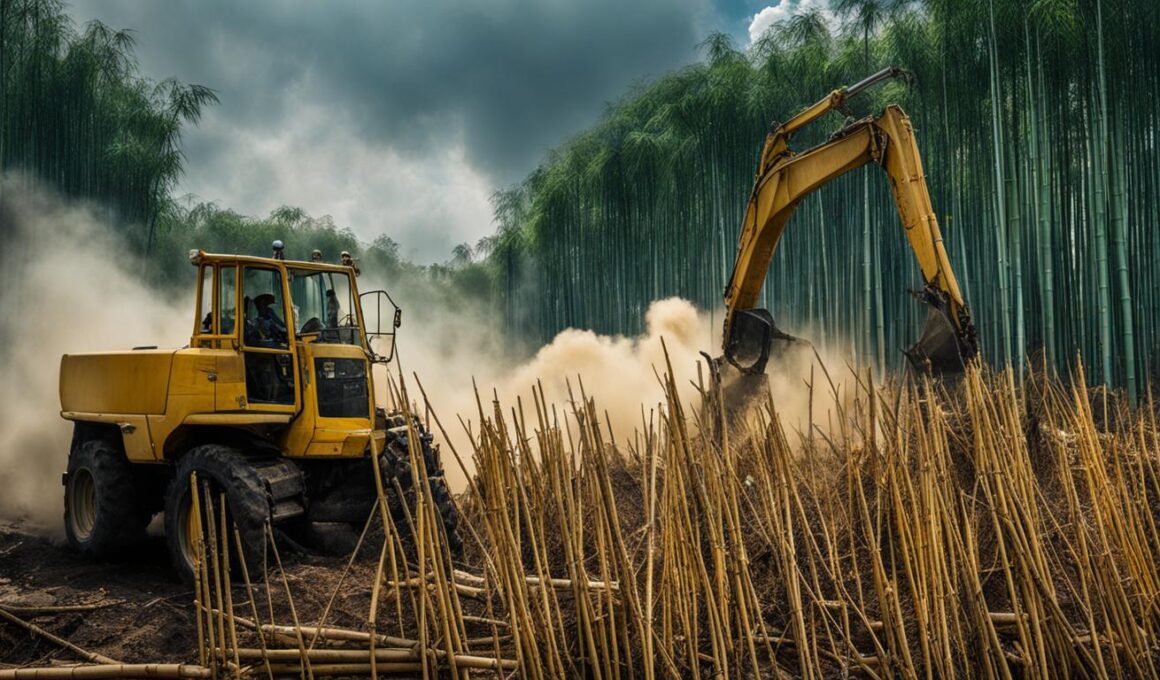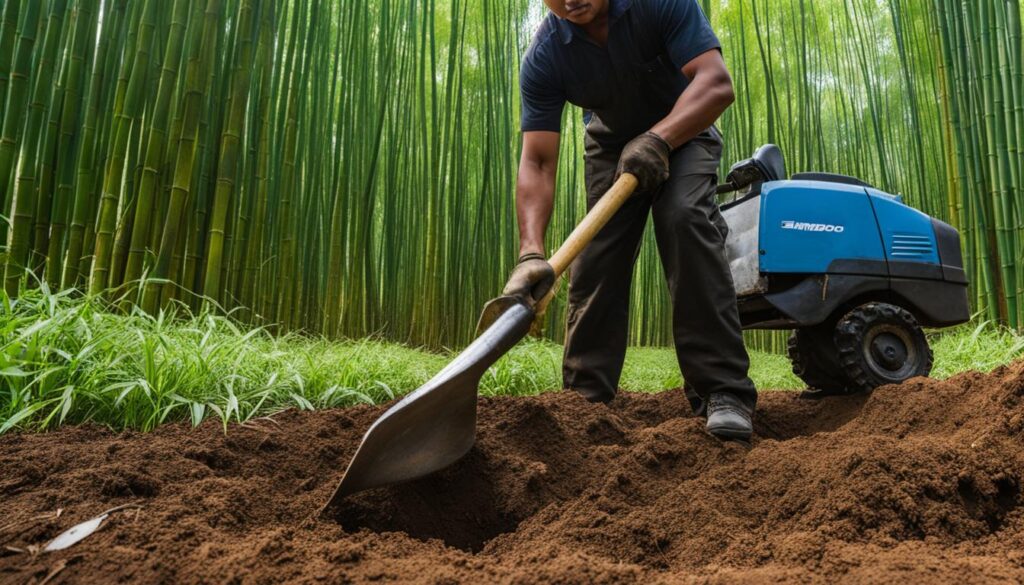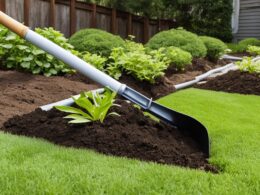Is your yard or garden being overrun by stubborn bamboo? Don’t worry, you’re not alone. Bamboo is a fast-growing and invasive plant that can quickly take over your outdoor space, causing headaches for many homeowners. But fear not, there is a solution that has proven to be effective in eliminating bamboo: the diesel method.
In this article, we will delve into the process of killing bamboo with diesel, providing you with valuable insights and tips to get rid of this invasive plant once and for all. We understand the frustration that comes with battling bamboo, and we are here to guide you on your journey towards a bamboo-free environment.
The diesel method involves using diesel fuel to destroy the bamboo and prevent its regrowth. This technique targets the underground rhizomes of bamboo, which are responsible for its rapid spread. By applying diesel to the bamboo shoots and rhizomes, you can effectively eliminate this invasive plant from your property.
But keep in mind that the diesel method is not the only approach you can take. We will also explore alternative techniques for killing bamboo, including physical, organic, and chemical methods. By understanding the different options available, you can choose the method that suits your needs and preferences.
So, if you’re ready to take back control of your yard and eliminate bamboo with the diesel method, let’s dive into the various techniques and strategies for successful eradication. Say goodbye to the bamboo invasion and hello to a beautifully landscaped outdoor space. You’ve got this!
Types of Bamboo and their Growth Patterns
Bamboo, a versatile and fast-growing plant, offers many benefits in landscaping and gardening. Understanding the different types of bamboo and their growth patterns is crucial for effective management and control.
There are two main types of bamboo: running bamboo and clumping bamboo. Running bamboo, as the name suggests, spreads horizontally through underground rhizomes, making it invasive and challenging to contain. Its aggressive growth habit can lead to the bamboo taking over your yard or garden if left unchecked.
In contrast, clumping bamboo has a more compact growth habit. It tends to stay in a tight clump and does not spread as aggressively as running bamboo. This makes clumping bamboo a preferable choice for those looking for a non-invasive option.
To visually differentiate between the two types, running bamboo often has long, slender culms (stems) that grow parallel to the ground. On the other hand, clumping bamboo typically has thicker culms that grow upright from a central point, forming distinct clumps.
When deciding on the best method for eradicating bamboo, understanding its growth pattern is essential. Running bamboo requires more effort and control measures, whereas clumping bamboo is generally easier to manage.
Take a look at the image below to see the contrasting growth patterns of running bamboo and clumping bamboo:
Different Techniques for Killing Bamboo
When it comes to eradicating bamboo, there are various techniques you can employ, ranging from physical methods to organic and chemical approaches. Each method has its own advantages and considerations, so it’s important to choose the one that works best for your specific situation.
1. Mowing and Digging Bamboo
Mowing and digging up the root system is an effective way to control bamboo growth. By regularly mowing the bamboo shoots and digging up the rhizomes, you can disrupt their growth and prevent the plant from spreading further. However, this method can be labor-intensive and may require ongoing maintenance to ensure success.
2. Heat Method for Bamboo
Using heat is another technique that can be employed to kill bamboo. This can be done through methods such as burning or boiling the bamboo shoots and rhizomes. However, it’s important to note that these heat methods may not be environmentally friendly and can pose a fire hazard if not carried out safely.
3. Vinegar as an Organic Method
Vinegar can be used as an organic method to hinder bamboo growth. The acetic acid in vinegar acts as a natural herbicide, damaging the bamboo shoots and starving the plant of essential nutrients. Simply spray a mixture of vinegar and water on the bamboo regularly to inhibit its growth. However, keep in mind that vinegar may also affect surrounding plants, so use it judiciously.
4. Using Herbicides for Bamboo Removal
If other methods have been unsuccessful, herbicides can be used as a last resort for bamboo removal. However, it’s important to exercise caution when using herbicides, as they can harm the environment if not applied properly. If you choose to use herbicides, follow the instructions carefully and consider seeking professional advice to ensure safe and effective application.
Remember, the ultimate goal is to completely eradicate the bamboo from your property. Depending on the size of the bamboo patch and the extent of its growth, you may need to combine different techniques or repeat the eradication process multiple times to ensure success.
Continue reading to learn more about managing and controlling bamboo growth in Section 4.
Managing and Controlling Bamboo Growth
Managing and controlling the growth of bamboo is crucial to prevent it from spreading and becoming a nuisance in your yard or garden. Fortunately, there are several effective techniques you can use to keep bamboo growth in check.
Bamboo containment: One effective method of controlling bamboo is by using bamboo containment techniques. Installing root barriers is an excellent way to restrict the growth of bamboo. These barriers are typically made of thick plastic or metal and are buried around the bamboo clumps to prevent the rhizomes from spreading beyond the designated area. This helps create a boundary and prevents the bamboo from invading other parts of your property.
Using containers: Another option for managing bamboo growth is to plant it in containers. By using large containers or pots, you can confine the bamboo to a specific area. This not only helps control its growth but also allows you to easily move or relocate the bamboo if needed. Just make sure to choose containers that are deep and wide enough to accommodate the root system of the bamboo.
Severing the rhizomes: Severing the rhizomes is an important step in controlling the spread of bamboo. Rhizomes are underground stems that allow bamboo to spread and regenerate. By severing these rhizomes, you can prevent the bamboo from sending out new shoots and expanding its territory. This can be done by digging around the bamboo clumps and cutting through the rhizomes with a sharp tool, such as a shovel or pruning saw.
By implementing these methods, you can effectively manage and control the growth of bamboo in your yard or garden. Remember to regularly monitor the bamboo to ensure that it doesn’t escape its designated area. With proper containment and control measures, you can enjoy the beauty of bamboo without the worry of it taking over your outdoor space.
Is the Diesel Method Safe for the Environment and Other Plants When Eradicating Bamboo?
When eradicating bamboo, it’s important to consider environmental impact. The Diesel Method is effective for complete mole cricket elimination, but it may pose a risk to surrounding plants and the environment. Careful planning and consideration of alternative methods are crucial to minimize harm.
Conclusion
Eliminating bamboo from your yard can be a challenging task, but with the right methods and persistence, you can successfully eradicate this invasive plant. While killing bamboo with diesel is an effective option, it’s important to explore alternative methods as well.
There are various techniques available for bamboo eradication, including physical, organic, and chemical methods. Physical methods such as mowing and digging up the root system can be labor-intensive but yield results. Organic approaches like using vinegar can hinder bamboo growth without harming the environment. Finally, chemical methods like herbicides should be a last resort due to their potential environmental impact.
When implementing any method, it’s crucial to be thorough and repeat the process until the bamboo is completely eradicated. Take into consideration the growth patterns of the bamboo, as well as the specific characteristics of your yard.
By choosing the most effective method, being persistent, and using proper techniques, you can successfully remove bamboo from your property and restore your yard to its natural beauty. Remember to prioritize sustainability and environmental consciousness throughout the process.











